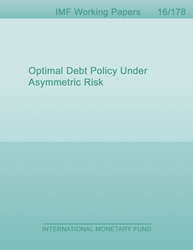
Optimal Debt Policy Under Asymmetric Risk
In the paper we show that, most of the time, smooth reduction in the debt ratio is optimal for tax-smoothing purposes when fiscal risks are asymmetric, with large debt-augmenting shocks more likely than commensurate debt reducing shocks. Asymmetric risks are a feature of 200 years of data for the U.S. and the U.K.: rare but recurrent large surges of the debt-to-GDP ratio, followed by very gradual but persistent declines over long periods. More informal evidence from many other countries suggests that asymmetry is a general feature of fiscal shocks. The gradual smooth reduction in the public debt to GDP ratio is not a response to past developments. Instead it is optimal given recurrent fiscal risks and the empirical characteristics of fiscal shocks. The behavior of the debt-to-GDP ratio in the U.K. and the U.S. seems roughly compatible with the prescriptions of the tax-smoothing model.
Publication date: August 2016
ISBN: 9781475529845
$18.00
Add to Cart by clicking price of the language and format you'd like to purchase
Available Languages and Formats
| English |
Prices in red indicate formats that are not yet available but are forthcoming.
Topics covered in this book
This title contains information about the following subjects.
Click on a subject if you would like to see other titles with the same subjects.
Economics- Macroeconomics , Economics- Macroeconomics , Economics / General , Economics / General , International - Economics , International - Economics , Government Debt , Optimal Debt Policies , Fiscal Risks , Fiscal Shocks
Summary
Copyright © 2010 - 2024
Powered by:
AIDC



